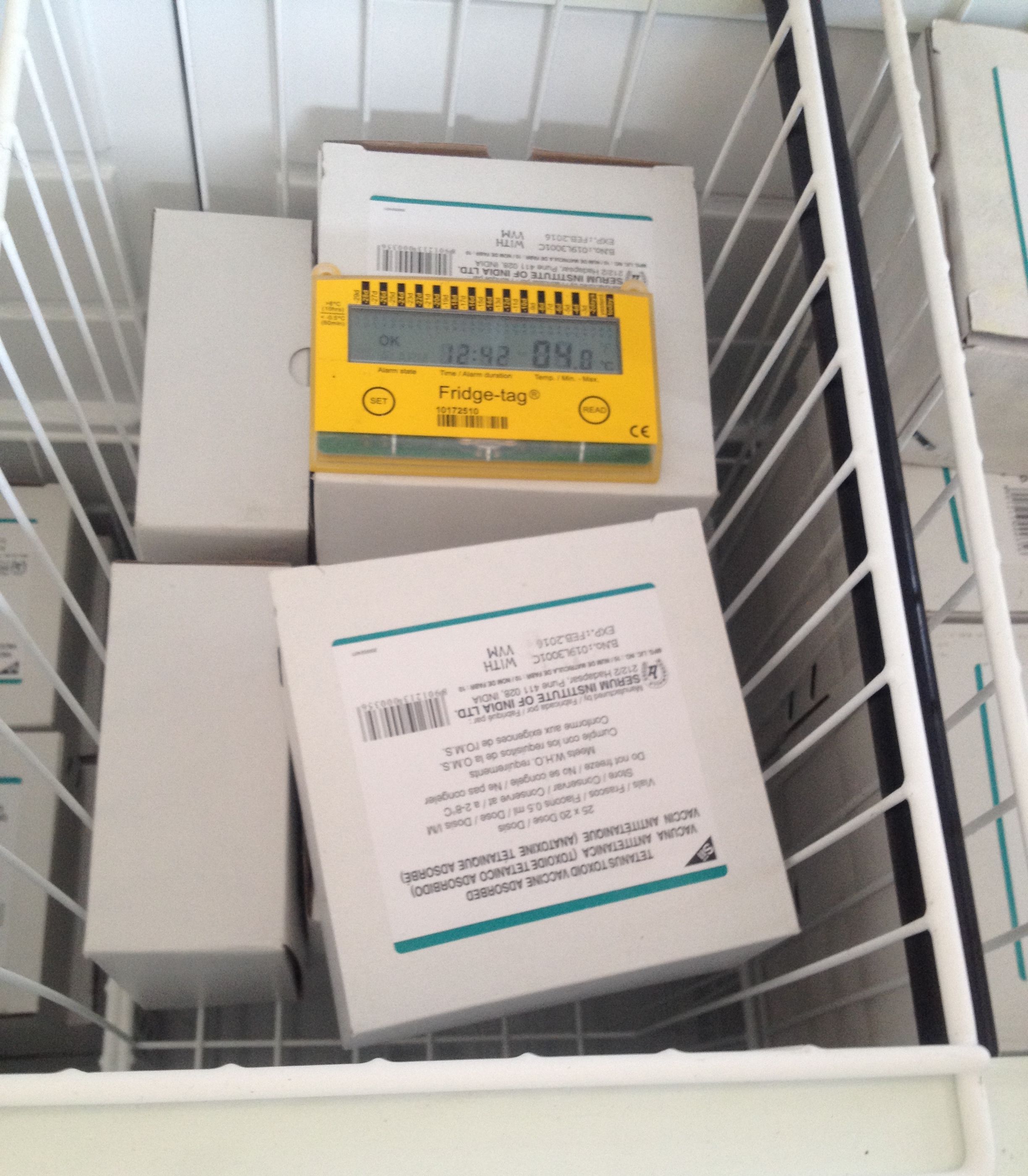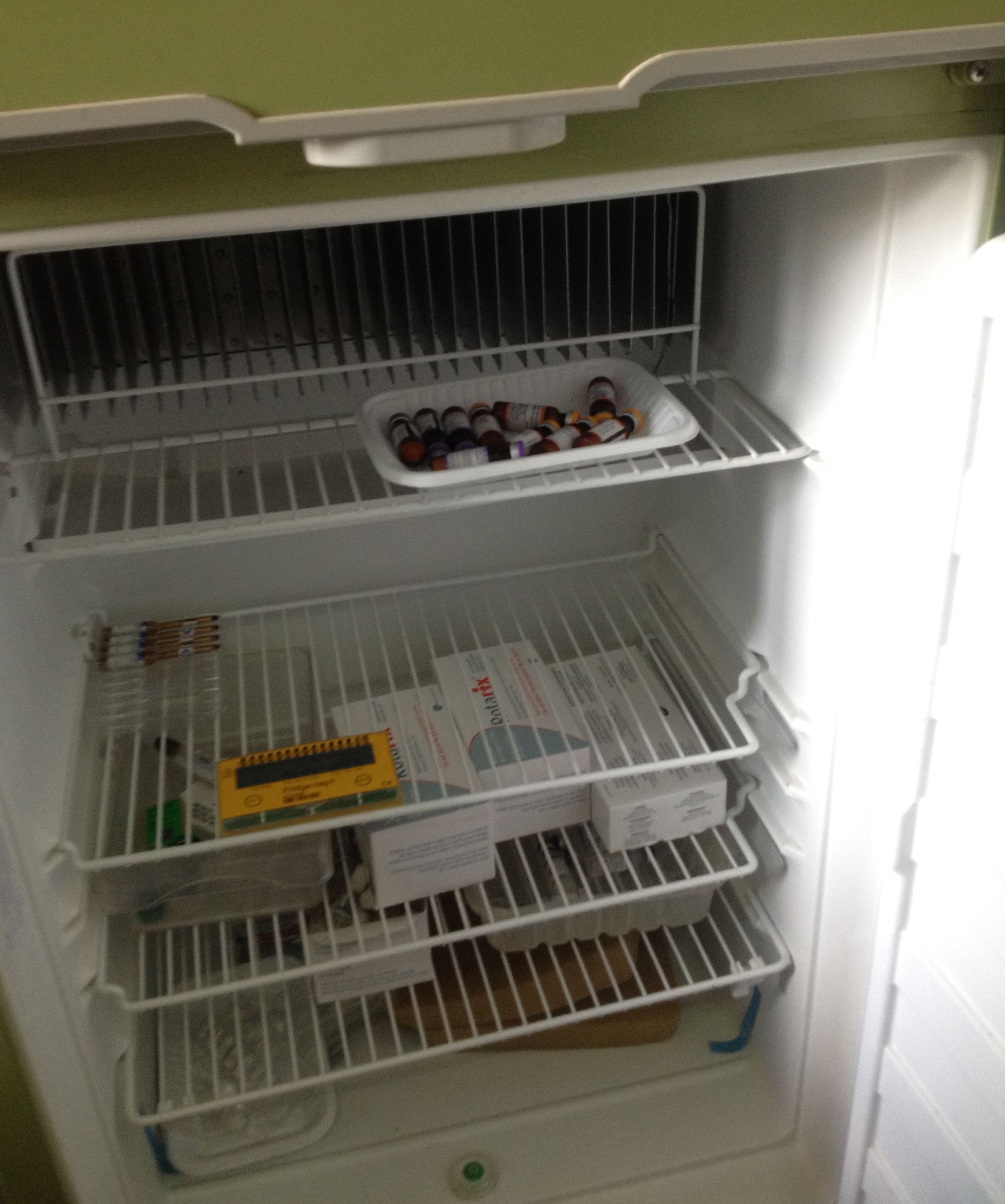The budget and the method of distribution from the point of arrival to every fridge receiving vaccines must be defined at the planning stage, including any customs clearance that may be needed. Precise numbers must be provided, based on equipment inventory, for each point in the distribution chain.
There are 3 recommended strategies for distribution and activation:
- Distribute to health workers at the time of classroom training and activate during that session : Ideal when monthly meetings or other similar meetings are held. Would preferably include the supportive supervisory visits with 'on-site' review of practice and understanding, and 'on-the-job' further training as needed.
- Distribute activated devices with simple written instructions with vaccine shipment; follow-up with supervisory visit to ensure that the devices are correctly placed in the equipment, that the workers have understood how to read, record, and respond to alarms and to collect fridge performance data: Recommended when there are no regular meetings.
- Distribute through supervisory visits to activate and install units at each health facility with follow-up supervisory visits as above.
The activation process includes setting the time and day as well as choosing the temperature scale (Celsius/Fahrenheit). The process is different for each device. Directions can be found in the individual specifications (FridgeTag & LogTag) in the related resources at the bottom of the page. Activation only happens once. Depending on the training strategy chosen, it is not necessary to train all health workers on how to configure the devices.
Different strategies have been used for device activation and settings in previous experiences of deployment. The table below summarises the positive (+) and negative elements (-) in each method.
| Approach | Positive (+) | Negative (-) |
|---|---|---|
|
a) Activation upon receipt at the central or regional level before dispatch,throughout the country or in selected areas |
|
|
| b) Activation on site during the supervisor visit or technical visit |
|
|
| c) Activation on site by the health workers when they receive the devices before training |
|
|
| d) Activation on site by the health workers when they receive the device after training |
|
|
| e) Activation during the training sessions |
|
|
Placement of the devices in the refrigerators

Photos: Placement of 30DTR in a chest refrigerator (left), and in a front-opening refrigerator (right)
As per WHO guidelines, the 30DTR device should be placed in the coldest part of the refrigerator, especially if it is used to store freeze-sensitive vaccines. This part would typically be the bottom of the basket in chest refrigerators or nearest to the evaporator plate in front-opening models and absorption units. If the stored vaccines are not freeze-sensitive, the device can be placed at the top of the load in the refrigerator for easier reading, also taking into account the risk of the device falling when opening the door or during manipulation. A stem thermometer should also be kept in the refrigerator as a back up. Since the recommended placement depends on the type of vaccines, it is important to know which vaccines are stored in which refrigerator.
Follow up supervisory visits are critical in ensuring the placement and correct use of 30DTR.
Replacement
The current 30DTRs have a guaranteed life of three years in total and two years after activation. However, their batteries may last more or less time, depending on various factors, and especially how often the ‘read’ button is pushed. The ‘low batt’ sign appears on the devices about a month before the battery expires. Therefore, the replacement programme, must be planned well ahead of the devices expiring: approx. 18 month after the first shipment. Storage temperature for the inactivated devices is +5-25°C.
When the device is expired, the battery should be removed and disposed of in a battery waste container.
Related resources
| Title | Author | Year | Type | Language |
|---|---|---|---|---|
| Fridge-tag 2 / Installation (FR) | Berlinger & Co. AG | 2014 | User guide | English |
| Fridge-tag 2 Video Set up (EN) | Berlinger & Co. AG | 2014 | Case study | English |
| FridgeTag setup brochure | Berlinger & Co. AG | User guide | English | |
| Fridgetag1 short user guide | User guide | English | ||
| Introduction of Fridge-tag® - Improving temperature monitoring in refrigerators | World Health Organization (WHO) | Guidance | English | |
| LogTag setup brochure | User guide | English | ||
| Présentation du Fridge-tag® Amélioration de la surveillance de la température dans les réfrigérateurs | World Health Organization (WHO) | 2013 | Guidance | French |
| The LogTag vaxtag setup guide | LogTag Recorders Limited | User guide | English | |
| WHO user manual - How to use the Fridgetag® | Umit Kartoglu, World Health Organization (WHO) | Case study | English |

